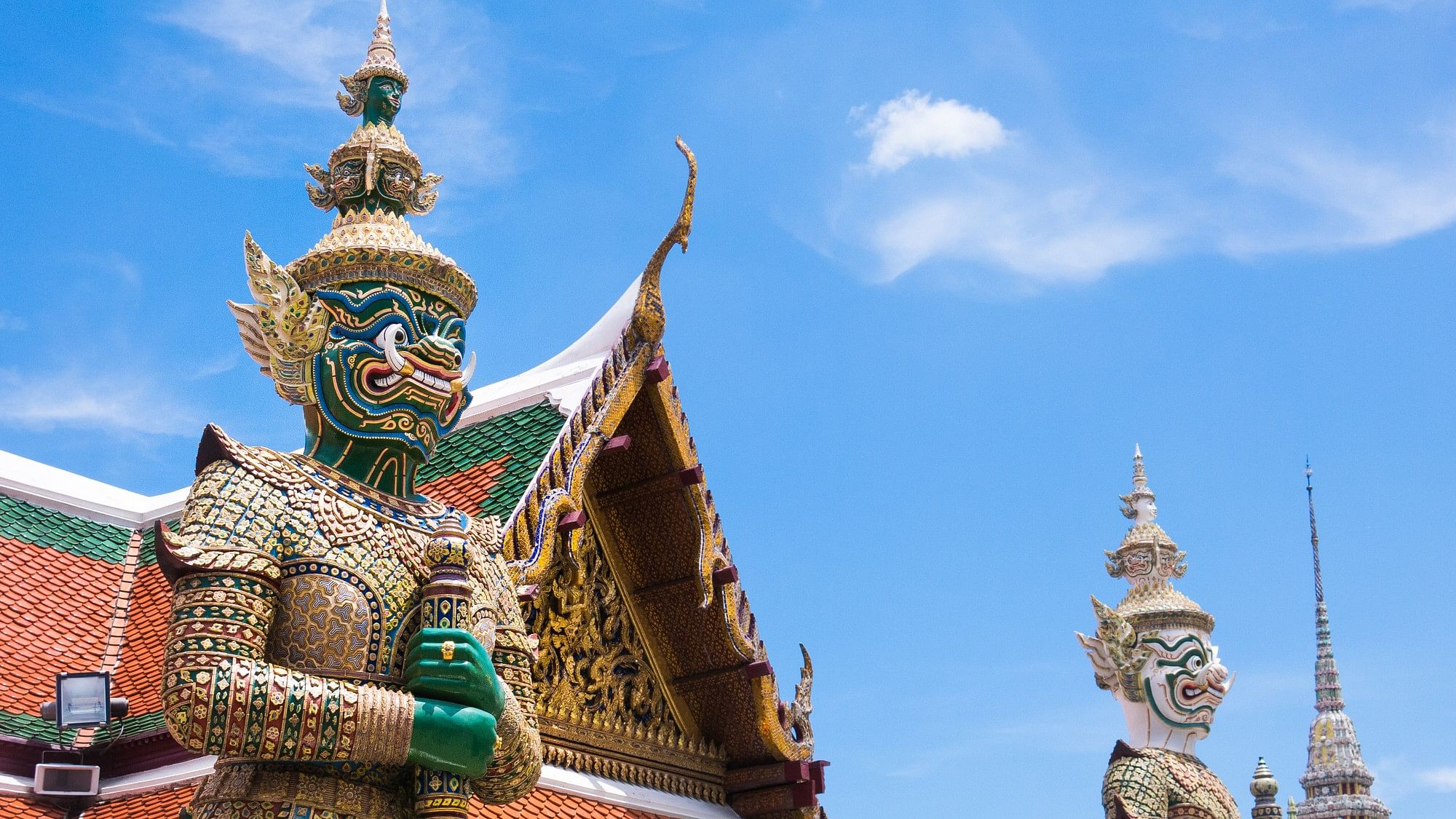
Buddhist lore refers to many magical creatures like Yakshas, Rakshas, Apsaras, Bhutas, and Pretas, who are frequently encountered by the Buddha and Buddhist monks.
Credit: iStock Photo
Yakshas are magical creatures in Indian mythology much like dwarves of European lore, linked to gems and gold. They appear as corpulent deformed beings, wearing elaborate jewellery, on Buddhist, Jain, and Hindu shrines.
Kubera is their king. Kubera’s wife is Nidhi, which means treasure. Kubera is called Nara-vahana, one who rides humans, perhaps indicating the power of wealth over humans. He has a golden mongoose that spits out gems. The mongoose obtains these gems from Nagas, snake-like creatures who live under the earth.
In Ramayana, Kubera built the city of Lanka but was driven out by his half-brother Ravana, king of rakshasas. Their father is a Brahmin, Vishrava, who descends from Pulatsya, one of the primal seven seers (Sapta Rishi). Thus, Yakshas and Rakshasas (yakka and rakha, of Buddhist lore) are related.
Nagas make the earth fertile. Yakshas hoard wealth. Rakshasas steal wealth. All are linked to the wilderness.
Nagas are underground terrified of Yakshas who will steal their jewels. Yakshas are driven north by Ravana, who rules the south. When Kubera moves north, he establishes Alanka or Alaka near the Himalayas, to match the splendour of Lanka. Alaka is full of gems. Lanka is made of gold. Like Ravana, Kubera, worships Shiva. So many link Yakshas and Rakshasas with Shiva’s minions or ganas.
Those who see mythology as history believe the Yakshas and Rakshasas were pre-Aryan forest-dwelling tribes. Nagas fear the mongoose of the Yaksha-king. The Yaksha-king fears the Rakshasa-king. All of them end up under the spell of Hindu gods, Buddhist monks, and Jain sages.
In Buddhist lore, particularly in the ‘Divyavadana’, which tells the story of Ashoka, we learn how he had under his control magical beings like Yakshas and Nagas, and that his messages would be transmitted to the world of Yakshas and Nagas. These were not considered supernatural beings; they were seen as part of the cosmos that the ancient Buddhists inhabited.
In fact, Buddhist lore refers to many magical creatures like Yakshas, Rakshas, Apsaras, Bhutas, and Pretas, who are frequently encountered by the Buddha and Buddhist monks. We are told that these forest spirit deities were initially very hostile but gradually came under Buddhist influence and were tamed. Sometimes they were driven away, sometimes they were pacified, and sometimes they were even venerated, becoming guardians of Buddhist monasteries, universities, and stupas.
For example, in the ‘Jatakamala’, we hear of a Yaksha who wonders why the people of a kingdom are not afraid of him. He is told that the king, Maitri Bala, is a Bodhisattva and that under his rule, nobody is unhappy. The Yaksha goes to Maitri Bala and demands food, specifically human flesh, and the king offers his own body to feed the Yaksha. This act impresses the Yaksha, who then converts to Buddhism.
In the ‘Silappatikaram’ and ‘Manimekalai’, Tamil Buddhist texts, we hear about a Buddhist nun who gives a fistful of rice to a Vidyadhara, cursed with eternal hunger, and he is immediately cured. He then becomes a guardian, helping her travel through forests and crematoriums, protecting her from all ghost spirits in the region.
Often, we hear of Yakshas coming to the rescue of Buddhist kings and monks, even defeating their rivals. For instance, in the ‘Mahavamsa’, there is a story of how Pushyamitra, the enemy of the Buddhists, is defeated by Yakshas who support Buddhism.
Across Buddhist sites, one finds tiny shrines dedicated to Yakshas. We hear of how the Buddha travels to lands like Sri Lanka or Champa, where he encounters Yakshas and Nagas, and converts them to the Buddhist way.
One wonders what these stories signify. Could they represent the conversion of tribal people who were initially hostile to the Buddhists but were eventually influenced by the force of the monastic personality, as well as the new technologies of agriculture and trade that came with the Buddhists? This influence might have made them gradually more collaborative and friendly, with their gods not entirely rejected but rather becoming guardians of the Buddhist monks and monasteries. These guardians evolved into the various Yakshas and Yakshinis who adorned the chaityas and were seen as dancers, musicians, guardians, and fertility gods, eventually becoming the various goddesses and yoginis of Tantra.
In Jainism, too, we find every Tirthankara linked with a Yaksha and Yakshini, who clearly resemble folk gods — gods who dwelt in nature, some good and some bad — who were eventually adopted into the Jain pantheons.
Nagas are found in Buddhist and Jain traditions too, the hood of the serpent sheltering the Buddha and the Tirthankara Parsvanatha. Vishnu sleeps on the coils of the Naga. Shiva has a serpent around his neck.
These are stories of either acculturation or appropriation, depending on how we choose to interpret them. This is how many tribal communities became part of the more urbanised mainstream, a process that later came to be known as ‘Sanskritisation’.
(Devdutt Pattanaik is the author of more than 50 books on mythology. X: @devduttmyth.)
Disclaimer: The views expressed above are the author's own. They do not necessarily reflect the views of DH.